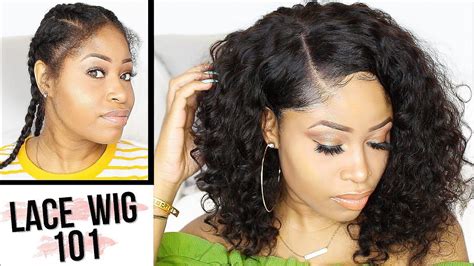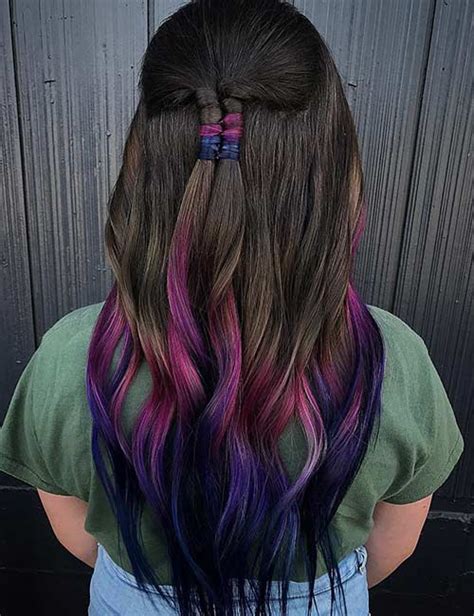Prepare to be mesmerized by these stunning purple ombre hair color transformations! From subtle hues to bold shades, there’s a purple ombre style to suit every taste.

Shades of Purple Ombre
- Lavender Ombre: A gentle gradient from light lavender to a deeper purple, creating an ethereal and romantic look.
- Amethyst Ombre: Inspired by the captivating gemstone, this ombre boasts rich purple hues that shimmer in the light.
- Plum Ombre: A deep and sultry shade of purple that adds a touch of sophistication to any hairstyle.
- Magenta Ombre: A vibrant and eye-catching shade that transitions into a darker purple or black base.
- Lilac Ombre: A soft and delicate shade of purple that evokes femininity and grace.
Techniques for Achieving Purple Ombre
- Traditional Ombre: A gradual transition from one shade of purple to another, using a blending technique.
- Dip-Dye Ombre: A bolder version where the ends of the hair are completely saturated in purple.
- Root Fade Ombre: A gradual transition from dark roots to purple ends, creating a subtle and natural look.
Benefits of Purple Ombre Hair Color
- Versatile: Suits a wide range of skin tones and hair textures.
- Trendy: A highly sought-after hair color trend that adds a touch of uniqueness and flair.
- Low Maintenance: Requires less frequent touch-ups compared to all-over purple hair.
- Damage-Minimizing: Ombre techniques typically involve less bleach, reducing damage to the hair.
How to Choose the Right Purple Ombre
- Skin Tone: Warm skin tones complement amethyst and plum shades, while cool skin tones look radiant with lavender and lilac hues.
- Hair Color: Start with a natural hair color close to the desired base shade of purple for a seamless blend.
- Hair Texture: Fine hair may require more frequent touch-ups, while thick hair can handle bolder ombre transitions.
- Personal Style: Consider your personal tastes and preferences when selecting the shade and intensity of purple.
Common Mistakes to Avoid
- Over-bleaching: Excessive bleaching can damage the hair and compromise its health.
- Uneven Blending: Ensure a smooth transition between purple and base shades to avoid a choppy look.
- Improper Toner Selection: Choose a toner that complements the desired purple hue and enhances its vibrancy.
- Not Moisturizing: Purple ombre hair requires regular deep conditioning and moisture treatments to prevent dryness.
Pros and Cons of Purple Ombre Hair Color
| Pros | Cons |
|---|---|
| Versatile and trendy | Requires frequent touch-ups |
| Low maintenance | Can be difficult to remove |
| Damage-minimizing | Not suitable for all hair types |
| Enhances hair texture | May fade over time |
Inspiration for Your Purple Ombre
Table 1: Purple Ombre Shades for Different Skin Tones
| Skin Tone | Recommended Shades |
|---|---|
| Cool | Lavender, Lilac |
| Warm | Amethyst, Plum |
| Neutral | Any shade of purple |
Table 2: Techniques for Achieving Purple Ombre
| Technique | Description |
|---|---|
| Traditional Ombre | Gradual transition between colors |
| Dip-Dye Ombre | Ends completely saturated in purple |
| Root Fade Ombre | Gradual transition from dark roots to purple ends |
Table 3: Factors to Consider When Choosing Purple Ombre
| Factor | Considerations |
|---|---|
| Skin Tone | Complementing shades |
| Hair Color | Seamless blending |
| Hair Texture | Maintenance requirements |
| Personal Style | Preferences and tastes |
Table 4: Tips for Maintaining Purple Ombre Hair
| Tip | Description |
|---|---|
| Use sulfate-free shampoo and conditioner | Preserve hair color |
| Protect from sunlight | Minimize fading |
| Deep condition regularly | Restore moisture |
| Avoid hot styling tools | Reduce heat damage |
